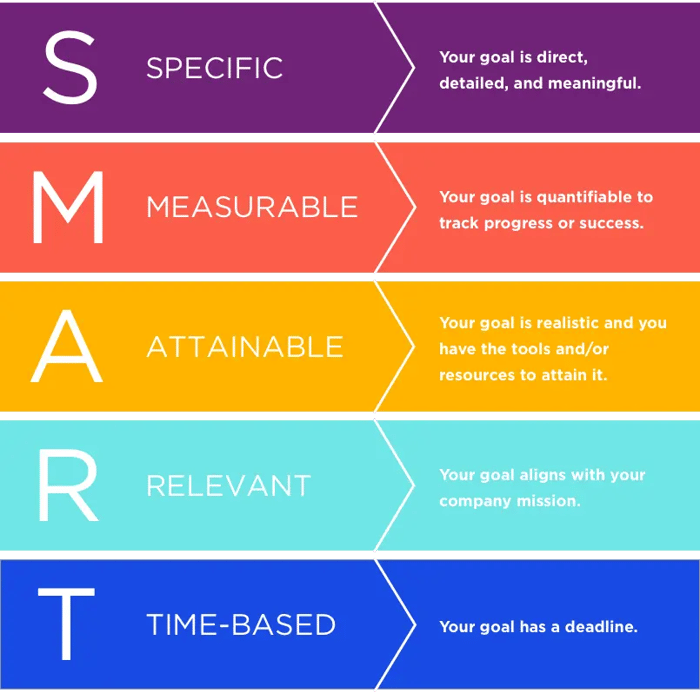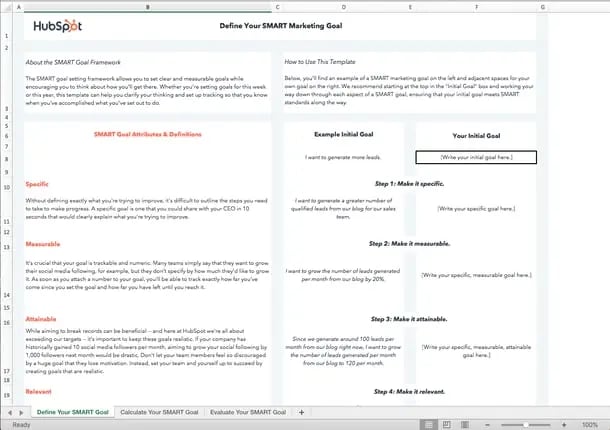Everyone has hopes, dreams, and aspirations in life. These are exponential as children. Adults always ask children what they want to be when we grew up. Often, they respond with "pop star," "President," "astronaut," and more. These things never seemed out of reach. On the contrary, we firmly believe we would accomplish these goals, and so we set out to don Halloween costumes in our dream professions and ask Santa to bring us microphones, suits, and spaceships.

Unfortunately, with age, many realize that some dreams aren't meant to be. Some of them did become ballerinas, presidents, and astronauts. But, others found new paths that were no better or worse, but different. There was nothing wrong with the goals that were set as children; rather, they were sometimes unattainable or simply the wrong goals for their personal growth.
Similar sentiments can be applied within the business world, especially the realm of customer service. By dreaming too big, you can create more and more opportunities for falling short.
Setting the right goals is key to a successful work environment, but that can be easier said than done.
SMART Goal Setting for Customer Service
1. Specific
Your team should recognize when they're on the right track towards achieving a team goal. If your goal is well-worded and explained thoroughly in advance, there should be no issues in comprehension. And, then, your team will feel the satisfaction of success every step of the way.
2. Measurable
Your goals are on the right track if there are milestones by which you can measure success. There should be metrics involved that help you compare results from before the strategies were implemented to after implementation to see how and why you were able to achieve the goals.
3. Attainable
Your goals should be attainable. While it would be nice to achieve total success, it's more about achieving growth. You should want your team to accomplish those goals, so give them the opportunity to do so, while still feeling challenged.
4. Relevant
When you set a goal, your team should understand and align with the purpose behind it. Your goal needs to match your company's values and expectations so that your employees understand why they're pursuing it.
5. Time-Based
A time-based goal adds an element of urgency to your project. Deadlines motivate employees to complete their work on time and represent a clear finish line for achieving your goal.

Now that you understand what qualities entail great customer service goals, you can use the following steps to set the best goals for your team.
How to Set Customer Service Goals in 5 Steps
1. Coordinate goal-setting with the rest of the company.
Customer service goals typically focus specifically on customer satisfaction, retention, and referrals, rather than large marketing and business goals set by other teams. However, that doesn't mean your goals can't align with the rest of the company. In fact, coordinating goals with other teams means that your company will continue to have a single mission and vision.
In addition, it will be easier to measure your success if you can do so with other teams. For instance, if one of your goals is to increase customer retention by 5%, you will have your own tactics to accomplish that. At the same time, the social team might be setting a goal to increase social media followers, and their tactic is to post more promotions and deals on social media. Perhaps, by comparing results with the social team, you can see if an increase in customer retention is also occurring due to the increase in promotions on social media for existing customers.
By comparing goals, tactics, and results with the entire company, you can make great conclusions about what strategies, implemented by your team or other teams, are going to help you achieve your specific goals. And, it will make your customer service employees feel more motivated if they know that their work could have an impact on not just their own team but on the company, as a whole.
2. Set clear tactics for achieving the goals.
Speaking of tactics, it's essential that you have clear and consistent tactics that help your team achieve its goals. Tactics are actionable steps taken towards reaching a final goal.
For example, if your goal of increasing customer retention by 5% remains, you might have several tactics, including:
- Increasing employee training in live chat and social media customer service
- Writing and scheduling more thank you and "we miss you" notes
- Offering a new weekly newsletter full of original content and helpful tips
These are mini goals that your team can achieve that will, hopefully, help them attain the final goal of increasing customer retention if all goes according to plan. These tactics can be split up between different individuals on the team. The end goal will seem less intimidating if it has smaller tactics to work up to it. And, it will give your team tangible ways to contribute to the end result.
3. Challenge your team beyond its comfort zone.
Of course, you want your goals to always be attainable. However, attainable doesn't have to mean easy. Unattainable might be setting a goal of increasing customer retention by 50% within the next month. Easy is maintaining customer retention. Attainable and challenging is increasing customer retention by 5%.
Your team will get bored if they're constantly doing the same, monotonous work every day. Boredom can often lead to laziness, incompetence, and increased employee turnover. Eliminate these factors by giving your employees some fresh goals to work towards every month, quarter, or other time frames.
A challenge is always good. It improves employee productivity and helps remind employees that their work matters. However, make sure they know that they can always find support from their superiors if needed. No individual should feel that they must handle the weight of the project on their own; rather, by working as a team, each person can lean on each other and utilize their individual strengths to collaborate as a whole.
4. Track individual and team progress.
Since you'll be assigning different employees to work on different tactics, it only makes sense that you'll want to track the progress of both individual team members and the entire team. In this way, you'll be able to pinpoint the root causes of any mishaps and the specific tactics that might have led to successes.
Tracking individual progress will also help your employees each feel heard. It's easy to lose sight of specific people when a large team is working together towards a common goal. So, make the time to sit down with each person and discuss their progress, strengths, and weaknesses during the project. It's likely they'll feel more comfortable opening up to you about challenges they're facing if they get the time to speak with you one-on-one.
5. Meet regularly to discuss changes.
Just because you set a goal at some point doesn't mean you have to stick to it. Perhaps that goal made sense at the start. For instance, a 5% increase might have made sense when starting out as your customer retention has always fluctuated around the same percentage, give or take 2%. However, as you progress through your tactics, you realize that you're actually doing better than expected. You can probably even reach a 7% increase within your timeline.
This is why it's important to meet regularly with your team to get their feedback. Ask them what's working and what isn't. If it seems like you're moving forward with flying colors, you can raise the bar. If it seems like your team is drowning a bit, maybe it's best to lower the goal a bit. Perhaps, even, you'll realize there's another goal that's more pressing. Put this one aside and work on the other one for a bit.
Goal-setting can be as flexible as you need it to be. Keep in mind that too much change can give your team whiplash, so, for the most part, keep things set. Take into consideration what your team is telling you. As long as progress is steady and your team seems to be feeling a good balance of challenge and success, you're sure to achieve results that you and your company will be proud of.
Not sure where to start? Here are some goals that you can use with your team.
Customer Service Goals
- Improve CSAT and NPS scores by ‘x' percent this (month, quarter, or year).
- Hire and onboard ‘x' more customer service employees by this date.
- Complete new customer service training by the end of this (month, quarter, or year).
- Reduce customer churn rate by ‘x' percent this (month, quarter, or year).
- Improve an industry-specific customer service metric by ‘x' percent this (month, quarter, or year).
- Increase employee satisfaction rates by ‘x' percent this (month, quarter, or year).
- Meet your daily service metrics for the rest of the (week, month, quarter, or year).
- Acquire a skill or learn a piece of software by this date.
- Respond to all pieces of customer feedback, regardless if they're positive or negative.
- Meet with a specific number of teammates by the end of this (quarter or year).
Customer Service Team Goals
1. Improve CSAT and NPS scores by ‘x' percent this (month, quarter, or year).
CSAT and NPS are two important metrics that summarize customer satisfaction. Improving these numbers means your team is delivering better customer experiences and are delighting customers during their interactions with your business. While you should always aim to improve CSAT and NPS, installing a specific benchmark reminds employees that each customer interaction is important and valuable to your company. You can track these numbers with HubSpot's Free Customer Service Metrics Calculator.
2. Hire and onboard ‘x' more customer service employees by this date.
Part of growing your business involves hiring and onboarding new employees. Your customer service team is no exception. The more you grow your customer base, the more pressure is put on your service employees to meet customer demand. If you fail to scale your service department accordingly, customers won't receive the same high-quality service that earned their loyalty in the first place.
3. Complete customer service training by the end of this (month, quarter, or year).
Not every customer service goal has to be customer-oriented. For example, you can make a goal that's centered around team development by encouraging employees to complete a customer service training program by a given time period. This not only gives your team more tools to perform their jobs but also reinforces your company's commitment to excellent customer service.
4. Reduce customer churn rate by ‘x' percent this (month, quarter, or year).
Marketers like to throw around the stat, "it's cheaper to retain a customer than acquire a new one." But, how you do keep track of the customers you're retaining compared to the ones you're acquiring?
One metric you can start with is your churn rate. Churn rate describes the number of customers who leave your business within a given time. By reducing this percentage, you'll retain more customers and increase total revenue.
5. Improve an industry-specific customer service metric by ‘x' percent this (month, quarter, or year).
Every customer service team is different, and depending on the industry you're a part of, the metrics that your team values are going to vary.
For instance, if you're a retail company that receives a high volume of calls regarding minor issues or tasks, you'll want a high first-call resolution rate and shorter wait times. But, if you're a B2B, SaaS company that provides essential software to a business, you'll focus on other metrics like call availability and adherence to schedule. It all depends on your customers' needs and what they expect from your business.
6. Increase employee satisfaction rates by ‘x' percent this (month, quarter, or year).
It's hard to grow and develop your customer service team if its members keep leaving your company. To track this, you should distribute internal feedback surveys that gather information on employee satisfaction. Knowing how happy or unhappy your agents are with your business can help you retain valuable employees and reduce your company's turnover rate.
Individual Customer Service Goals
7. Meet your daily service metrics for the rest of the (week, month, quarter, or year).
No matter if you're just starting a customer service role, or have been doing the job for years, meeting your daily metrics consistently is one of the biggest challenges for frontline reps. Customer service is an unpredictable field, and agents often need to adapt their workflows to complete their day-to-day responsibilities. Reps who can consistently meet company expectations are extremely valuable to your service team and can help your department achieve its broader, long-term goals.
8. Acquire a skill or learn a piece of software by this date.
Acquiring new customer service skills not only improves your rep's daily performance but also improves their satisfaction as well. When their job feels easier, they experience less friction in their daily workflow. And, less friction means your agents are happier when they interact with customers.
9. Respond to all pieces of customer feedback, regardless if they're positive or negative.
This is a very attainable customer service goal that every agent should aim to achieve. When customers provide feedback to your rep, they should always follow up with the customer, regardless if it's positive or negative. Negative feedback is an obvious opportunity to prevent potential churn, but positive feedback also presents a chance to foster a stronger relationship with the customer. By responding to positive feedback, you show people that you're genuinely interested in hearing what they have to stay and truly value their insight.
10. Meet with a specific number of teammates by the end of this (quarter or year).
Customer service can sometimes feel like an isolating role, especially if you're working in a remote setting. When your job revolves around serving customers, it's easy to forget about your teammates who are performing the same work alongside you.
Setting a goal to meet individually or as a group helps build team comradery. When you're more familiar with the people you're working with, you're more likely to ask for help when you need assistance. Encouraging this teamwork can lead to collaboration on customer issues, which leads to faster responses and more effective solutions.
Next, read this post on the most important customer success metrics to track.
![→ Download Now: Customer Support Training Template [Free Template]](https://no-cache.hubspot.com/cta/default/53/78097403-61d1-4855-9aa4-90c3cba6d94b.png)












